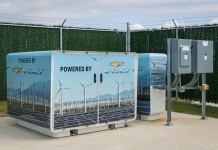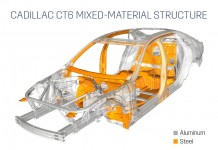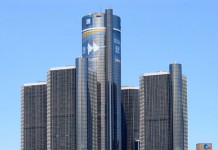General Motors notified 1,100 of its 6,000 dealerships Friday that it is terminating their contracts with the struggling automaker, the first step in an even deeper 40% cut in its retail network.
GM spokeswoman Susan Garontakos said that the dealers receiving notice Friday are being told that their contracts will not be renewed in October 2010. Many of them are expected to close shop this year.
The company has told the Obama administration that it plans to cut its network down to 3,600 dealers by next year.
Much of the rest of the cuts will come from GM’s plans to sell or close four brands – Saturn, Hummer, Saab and Pontiac.
Those four brands have about 600 dealerships that do not include other GM brands. But most Pontiac and Hummer dealers will stay in the GM family because they have one of the four remaining GM brands as part of their operation.
Business failures and purchases of dealerships by larger dealers has already shaved GM’s dealership ranks by about 300 dealership this year, Garontakos said.
GM Chief Executive Fritz Henderson said Monday that GM would work with the dealerships being cut to ensure an orderly wind down.
“As I look at it, it is work that will take place through ’09, and then we would wind down and handle the distribution of cars and make sure the customers are taken care of … make sure that dealers are reimbursed for warranties and that sort of thing,” Henderson said. “This is not a several week process.”
While many of the dealerships identified for closure could exit the business this year, Garontakos said they can also stay active through September 2010.
The move comes a day after Chrysler LLC announced that it is dropping nearly 800 Chrysler, Dodge and Jeep dealers, or about a quarter of its network, as part of its bankruptcy restructuring.
GM (GM, Fortune 500) is not yet in bankruptcy court, although Henderson has said such a filing is “probable.” The company has until the end of the month to win agreement from creditors, unions and dealerships on a turnaround plan. If it fails to do so, the Treasury Department, which has been bankrolling GM’s ongoing losses, has said it will force the company to file for bankruptcy.
GM, Chrysler and Detroit rival Ford Motor (F, Fortune 500) have far larger U.S. dealer networks than their Asian rivals, a remnant to the days when the so-called Big Three dominated the market in a way they no longer do.
The number of employees working at the dealerships that are being notified is not yet known. The average dealership has about 52 employees, according to the National Automobile Dealers of America, meaning about 57,000 workers could lose their job as a result of Friday’s action.
All told, the planned dealership cuts at Chrysler and GM will eventually cost 140,000 jobs, NADA estimates.
NADA and various dealership organizations at GM and Chrysler are fighting the cuts, lobbying Congress and hiring bankruptcy attorneys to argue their case. The dealers hope that strong state franchise laws may still protect them, despite the powers granted to the bankruptcy court and the demand for cuts by the Treasury Department.
“While NADA understands the realities of the current marketplace, we also know that dealers didn’t cause the situation,” the group said Thursday. “Furthermore, we believe that these draconian dealer cuts are not only misguided but counterproductive. Fewer dealers mean less revenue for the automakers. Dealers are the manufacturer’s customer; they buy the cars and parts and even the signs in front of their dealerships.”
Traditionally, eliminating brands and dealerships has been an expensive proposition for automakers. GM spent about $1 billion dropping Oldsmobile earlier this decade, mostly in payments to 2,800 dealers and the repurchase of their inventory of vehicles and parts.
But the cash-strapped GM is not offering payments or vehicle repurchases to dealerships in this current round of cuts, although it may make limited purchases of parts and equipment, Garontakos said.
GM has yet to identify which dealers were notified Friday. But its previously announced plans signal that most of the cuts will be in major metropolitan and suburban areas, where GM acknowledges that “dealership overcapacity is most prevalent.”
The company’s expectation is that the surviving dealerships will become larger and more profitable as a result of the thinning out, which in turn will allow them to spend more on advertising and facilities. But GM also acknowledges that its long-term decline in U.S. market share will continue as a result of the smaller network of dealers.
The company has about 2,700 dealers in rural areas, some with relatively low sales volumes. But even some of those small dealerships could be spared if they don’t face significant geographic competition.







